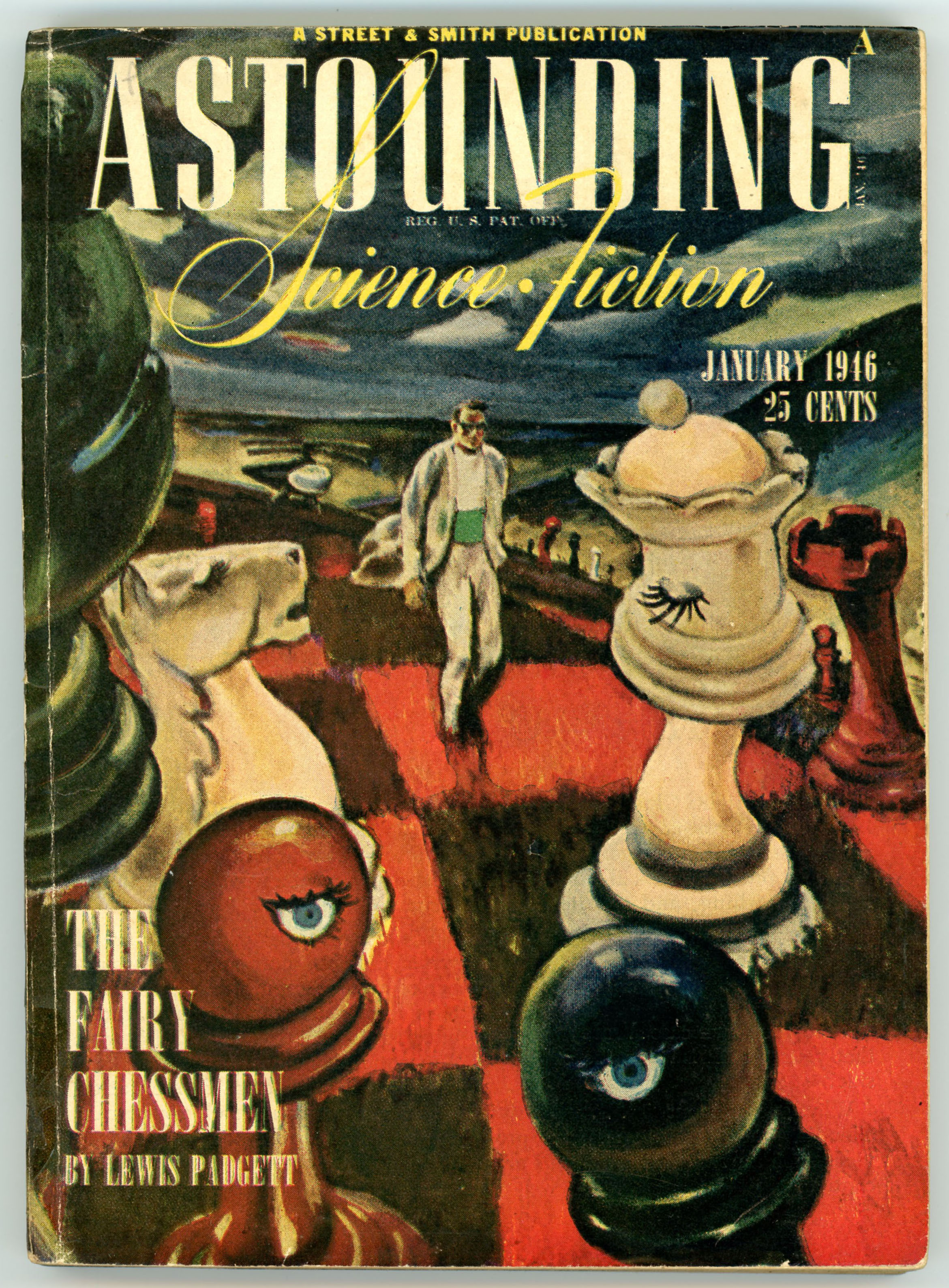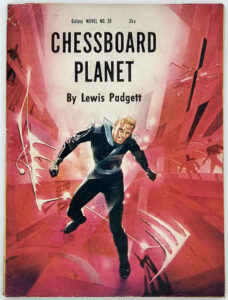The paintings of Richard Powers are striking in a variety of ways, one of the most obvious being the use of color. Well, there’s nothing too surprising in that, since color is an inherent part of our world. As for Powers, his works are typified by a combination of bright and contrasting colors of different hues, or, a range of colors in the same limited hue which differ from one another by saturation and intensity. (You can view numerous examples of these qualities “here”, at this blog!)
However, a very few of Powers paintings – at least, as reproduced for the covers of science fiction paperbacks – are the antithesis of color: They’re in “black & white”.
One, for the cover of Arthur C. Clarke’s Tales From the White Hart, was painted in shades of gray, with black and white details.
Another, for the cover of Macfadden Books 1967 edition of Clifford Simak’s All The Traps of Earth – below – is also in black & white. But, a close-up view of the painting suggests that the original art was actually in color. First, looking closely, you’ll see that the innumerable details in the painting were completed in many subtle, incremental gradations of gray, and as such, the painting lacks the contrast apparent in the cover of White Hart. Second, the features of the painting – the atmospheric quality; the indefinable, vaguely metallic, vaguely organic, curved objects floating in the sky – the strands of clouds wispily draped from lower left to upper right – the angular standing forms (buildings?) against the horizon – and especially, the suggestion of an alien “head” in the lower center – are features typical of Powers’ works which have been published in color. So, assuming the original was done in color, why did Macfadden publish the painting in black and white, given that the “SIMAK” logo is already in color?
This, I do not know.
Maybe just to be different?!
Regardless, even if in shades of gray, it’s still a cool painting.
And, markedly different from the very (!) plain back cover.
Contents
“All The Traps of Earth“, from The Magazine of Fantasy and Science Fiction, March, 1960
“Good Night, Mr. James“, from Galaxy Science Fiction, March, 1951
“Drop Dead“, from Galaxy Science Fiction, July, 1956
“The Sitters“, from Galaxy Science Fiction, April, 1958
“Installment Plan“, from Galaxy Magazine, February, 1959
“Condition of Employment“, from Galaxy Magazine, April, 1960
Here’s More
All the Traps of Earth, at the Internet Speculative Fiction Database







